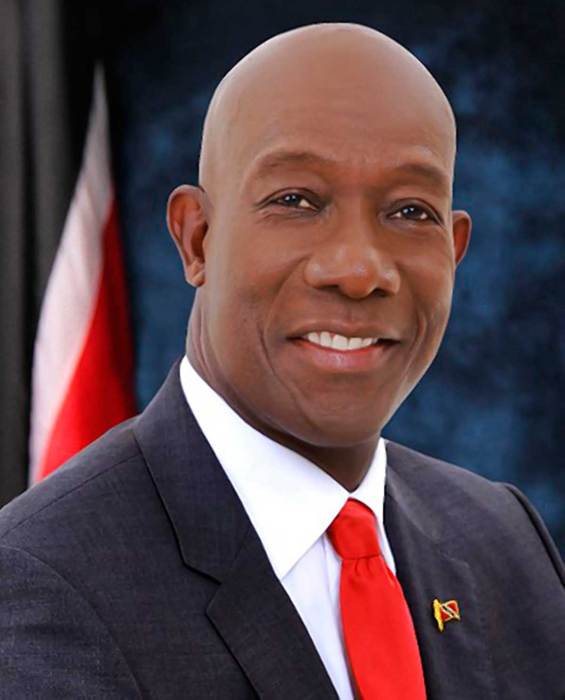 About 60 percent of men and 50 percent of women will experience at least one traumatic event in their lifetime, according to the National Center for PTSD.
About 60 percent of men and 50 percent of women will experience at least one traumatic event in their lifetime, according to the National Center for PTSD.
Approximately eight percent of the population — or 25 million Americans — suffers from post-traumatic stress disorder, and it’s not just members of the military.Thursday is PTSD Screening Day, and to learn more about the condition, we talked to Dr. Mark Rubinstein, a forensic psychiatrist and the author of the upcoming book “Love Gone Mad.”
What are the main symptoms of PTSD?
Before we talk about symptoms, let’s discuss events capable of evoking PTSD. The event must be traumatic and must be beyond the range of ordinary human experience. It’s typically experienced with a sense of imminent death and with overwhelming fear and helplessness by the victim. Typical events triggering the disorder are those such as wartime combat; the Sandy Hook school shootings; rape; riots; mob situations; assaults; prison camps; and natural disasters such as hurricanes, floods, tornadoes, volcanoes or tsunamis.
The symptoms involve reliving the trauma during the day with incessant, recurrent thoughts and recollections (flashbacks) in which the person re-experiences the intense feelings that accompanied the actual trauma. Often, there are recurrent nightmares in which all or part of the trauma is relived.
The victim tries to avoid any object or situation that either resembles or symbolizes the traumatic event. If exposed to such a situation, the person will likely experience anxiety that mounts to panic levels. For instance, a combat veteran of Vietnam will not go to a tropical area on vacation. A person who survived 9/11 cannot tolerate seeing an airplane in the sky.
In addition, having survived a catastrophic trauma, the victim often develops a foreshortened sense of the future and feels he or she won’t live very long. The person frequently begins experiencing free-floating anxiety, and feels uncontrollably anxious when exposed to any situation resembling the trauma. Often, the victim loses the ability to develop loving or intimate feelings toward another person. There may be nonspecific symptoms such as loss of sleep, poor appetite and withdrawal from social activities, along with feelings of depression, cynicism and despair.
Must it be a big, tragic even that triggers PTSD, or could a smaller event cause it?
Any event capable of causing a person to feel he or she may lose one’s life (or one in which a person witnesses such an event happening to others) can evoke PTSD. Certainly, some traumas are more catastrophic than others, but the basic requirement involves either being a victim or witnessing a situation in which death or serious physical injury occurs or is threatened to the self, to others or to loved ones. Any event experienced as life-threatening or with a sense of impending annihilation can bring on PTSD.
When do people with PTSD usually start noticing they’re afflicted? Or can people not even realize it?
There is no one-size-fits-all answer. Some people begin experiencing symptoms immediately. Technically, PTSD cannot be diagnosed until 30 days have elapsed since the trauma. This is because it’s considered normal for people to have symptoms following an overwhelming traumatic event — for a defined period of time. After 30 days, the diagnosis can technically be made. The signs and symptoms of PTSD are so overwhelmingly dramatic and life-altering, it’s difficult to imagine someone having them and not realizing something is terribly wrong. The person may not be able to define or diagnose exactly what is wrong, but he or she definitely recognizes something is amiss.
What’s the difference between PTSD and delayed-onset PTSD?
The only real difference is the timing of the onset of the disorder. Delayed PTSD may begin weeks, months, or even years after the traumatic event. While this is relatively uncommon, it can occur. I evaluated a concentration camp survivor who lost his entire family in Auschwitz during World War II. Though he was despondent and completely uprooted, he came to America and began leading a good, productive life. He was a carpenter who stayed alive in the camp because the SS officers admired his talent, and let him build cabinets and bookshelves for them. Forty years later, while doing construction work on a house in Queens, New York, he fell and injured his back. He could no longer work. His carpentry had not only saved his life, but was the glue holding him together. From the point of his incapacitating physical injury, he began experiencing nightmares of the camps, developed fears and panic attacks whenever he heard a police siren, and presented with the full constellation of signs and symptoms of PTSD. This of course, was a severe case of delayed-onset PTSD.
In your experience, has the number of cases of PTSD increased or decreased since you began practicing?
As a forensic psychiatrist, I have seen the same number of cases over many years. On the whole, there’s been no dramatic increase in the number of cases of this disorder. Of course, following the 9/11 terrorist attack on the World Trade Center, there was a huge influx of patients with PTSD. I personally examined more than 300 survivors of that disaster. But on the whole, the numbers seem to have remained stable. Of course, these days, we’re more aware of the disorder, and people are diagnosed with it more frequently. Also, since the Vietnam War, the war in Iraq and the action in Afghanistan, there have been many more soldiers developing the disorder. There’s always an increase in the number of people afflicted when wartime combat is ongoing.
Do you see equal numbers of males and females with it? What about children?
The disorder seems to be equally distributed between men and women. There has been no real difference between the numbers of men and women who survived the World Trade Center disaster and developed PTSD. Of course, wartime combat cases are seen mostly among men, whereas cases of rape and assault have brought many more women into psychiatric treatment. Generally though, men and women are equally vulnerable if a catastrophic traumatic event arises.
As for children, they too can develop the disorder. Generally, they present with less typical symptoms than adults. Kids tend to “act out” their symptoms. While they may have nightmares, they also tend to become disruptive in school, defiant and antagonistic at home, and don’t often present with the classical, well-known signs and symptoms of PTSD as do adults. Rather, they present with more generalized behavioral and emotional difficulties.
What options for help are available?
Depending on the severity of the disorder, several options are available. The most severe cases of PTSD often require medication and counseling. Today, medicines are available that suffocate most if not all symptoms of PTSD. Over time, the victim encounters situations that either resemble or symbolize the trauma, but does not have an overwhelmingly anxious response due to the medication. In a very real way, the person becomes desensitized to the trauma and can get better. Counseling also helps the person identify triggering situations. EMDR (Eye Movement Desensitization and Reprocessing) has had variable results, and the jury is still out on this technique.
It should be emphasized that most people with PTSD can be helped. It should also be noted that the disorder can re-emerge years later if another triggering event occurs such as a situation similar to the one evoking PTSD in the first place. In a sense, the memories of the trauma are never truly erased.
If you think you might be afflicted, take a free and anonymous self-quiz at www.ptsdscreening.org.
















